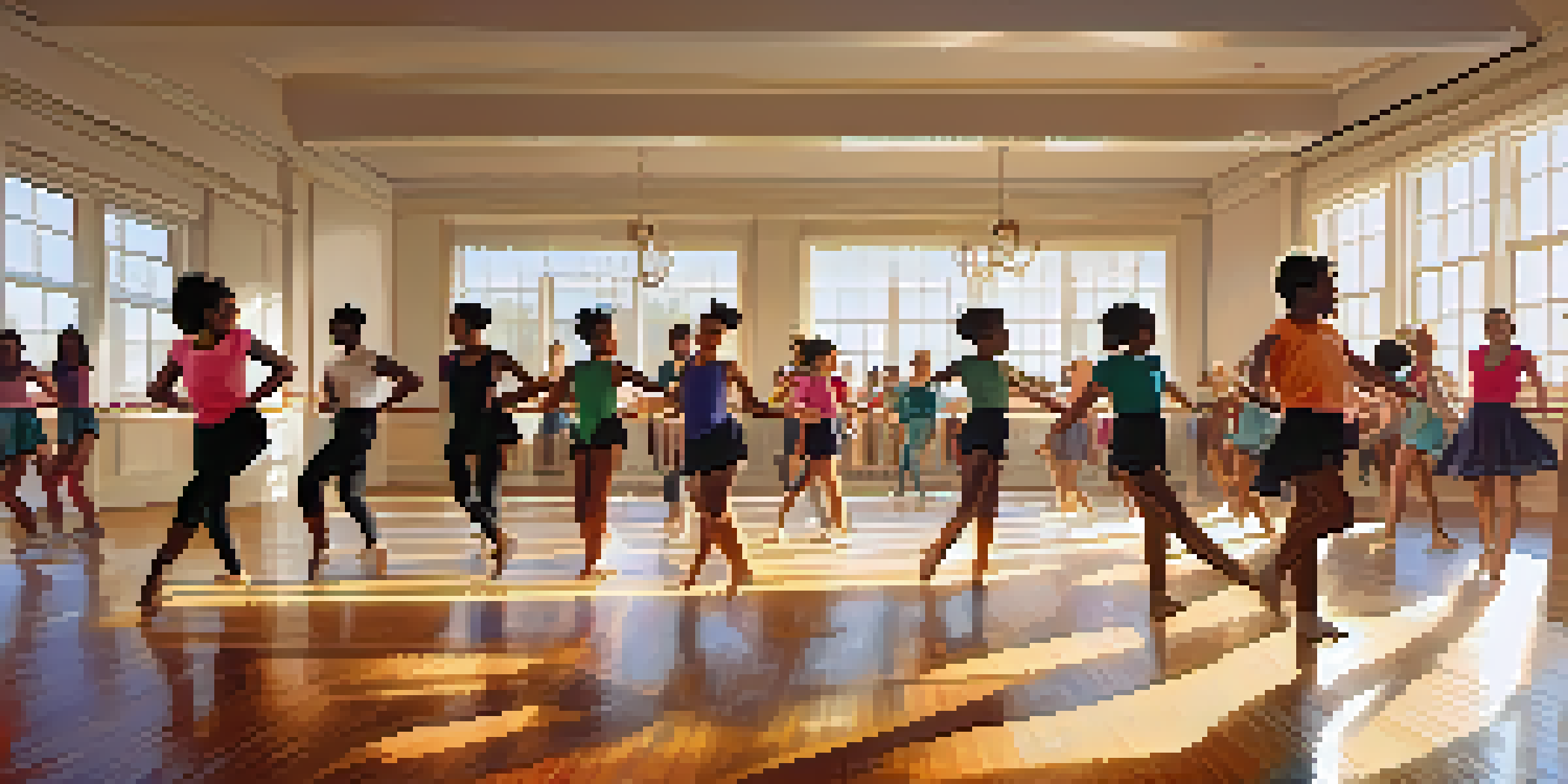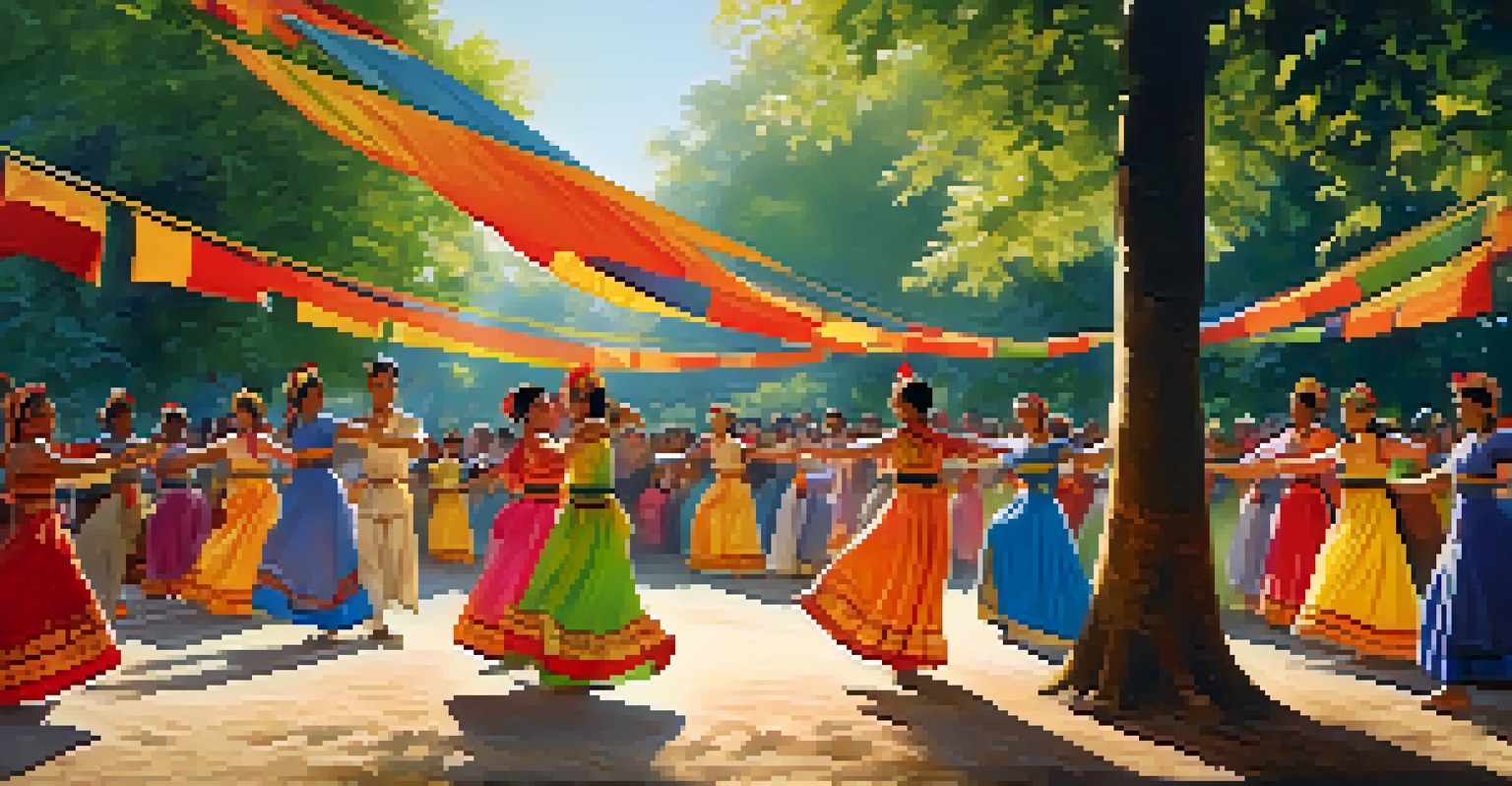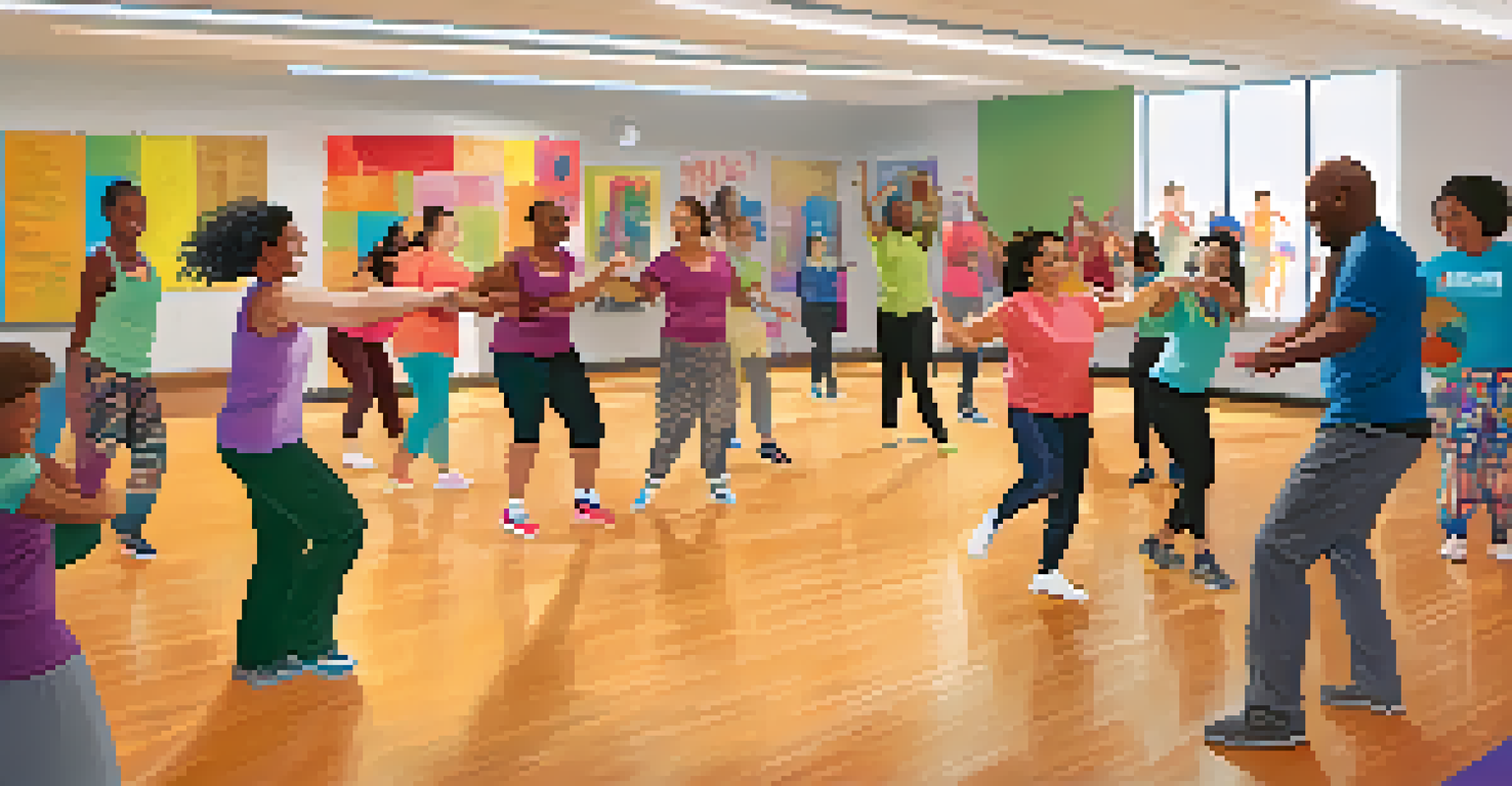The Influence of Dance on Mental Health in Community Settings

Understanding Dance as a Form of Expression
Dance is a powerful form of expression that transcends words. It allows individuals to communicate their feelings and experiences in a unique way. Whether it’s a solo performance or a group routine, dance can convey emotions that might be hard to articulate verbally.
Dance is the hidden language of the soul.
In community settings, this expressive outlet fosters connection among participants. When people dance together, they share a moment of vulnerability and authenticity. This shared experience can create a sense of belonging, essential for mental well-being.
Additionally, the physical aspect of dance can release endorphins, the body's natural mood lifters. When individuals engage in dance, they not only express themselves but also boost their overall mood and mental clarity.
The Science Behind Dance and Mental Health
Research shows that dance can significantly improve mental health outcomes. Studies indicate that engaging in dance can reduce symptoms of anxiety and depression. This is partly due to the combination of physical activity, social interaction, and creative expression that dance provides.

Moreover, dance therapy has been recognized as a therapeutic approach for various mental health issues. It incorporates movement as a way to help individuals process emotions and experiences. In community settings, this structured approach can enhance participants' emotional resilience.
Dance Enhances Emotional Expression
Dance serves as a powerful outlet for individuals to communicate their feelings and foster connections in a supportive community.
The benefits of dance extend beyond immediate feelings; they can lead to long-term mental health improvements. Regular participation in dance activities can help individuals develop coping mechanisms, ultimately leading to a healthier mindset.
Building Community Through Dance Programs
Community dance programs play a vital role in fostering social bonds. They bring together individuals from diverse backgrounds, creating a melting pot of culture and creativity. This interaction can break down barriers and promote inclusivity, which is crucial for mental health.
We should consider every day lost on which we have not danced at least once.
Participating in group dance classes can cultivate friendships and reduce feelings of isolation. As participants learn and grow together, they create a supportive network that encourages each other's mental and emotional well-being. The shared experience of learning new moves can enhance these connections.
Furthermore, community dance programs often provide a safe space for self-exploration. Individuals can express their identities and experiences through movement, helping to build confidence and self-esteem, both of which are essential for positive mental health.
Dance as a Coping Mechanism in Stressful Times
In times of stress, dance can serve as a healthy coping strategy. Many people find that moving their bodies to music allows them to release pent-up emotions and tension. It can act as a form of therapy, helping individuals process their feelings in a constructive way.
For instance, during challenging periods, group dance sessions can provide a much-needed escape. Participants can immerse themselves in the rhythm and let go of their worries, even if just for a while. This temporary relief can be vital for maintaining mental health.
Dance Programs Build Community Bonds
Community dance programs promote inclusivity, reduce isolation, and create supportive networks that enhance mental well-being.
Moreover, engaging in dance during difficult times can inspire resilience. Individuals who dance regularly often report feeling more empowered to face life's challenges, knowing they have a healthy outlet to turn to when needed.
The Role of Cultural Dance in Mental Well-Being
Cultural dance forms can greatly enhance community mental health. They not only celebrate heritage but also promote a sense of pride and identity among participants. When individuals engage in cultural dance, they connect with their roots, which can be incredibly grounding.
These dances often involve storytelling, allowing participants to share their histories and experiences. This storytelling aspect can foster a deeper understanding and appreciation among community members, building empathy and connection.
Additionally, cultural dance can create opportunities for intergenerational bonding. Older and younger community members can come together to share their knowledge of dance, strengthening ties and promoting mental well-being across generations.
Dance and Physical Health: A Mental Health Connection
The connection between physical health and mental health is well-documented, and dance is a fun way to bridge that gap. Regular dancing helps improve cardiovascular health, flexibility, and strength. These physical benefits contribute to an overall sense of well-being.
When people feel good physically, it often translates to better mental health. Engaging in dance can boost self-image and confidence, which are crucial for mental resilience. The positive feedback loop between physical and mental health is particularly evident in community dance settings.
Cultural Dance Fosters Mental Health
Engaging in cultural dance strengthens community ties, promotes identity, and enhances mental health through shared experiences.
Moreover, the social aspect of dance encourages participants to stay active. When individuals find joy in dancing with others, they are more likely to maintain their physical activity levels, further enhancing their mental health.
Creating Inclusive Dance Spaces for All
Creating inclusive dance spaces is essential for ensuring that everyone can benefit from dance. Community programs should be designed to welcome individuals of all ages, abilities, and backgrounds. This inclusivity not only enriches the dance experience but also promotes mental health for all participants.
Adaptive dance programs, for example, allow people with disabilities to participate fully. These initiatives foster a sense of belonging and encourage self-expression, proving that everyone can find joy in movement, regardless of their physical capabilities.

Furthermore, when communities prioritize inclusivity in dance, they cultivate diverse perspectives and creativity. This diversity can lead to richer experiences, creating a vibrant environment that supports mental health and community cohesion.